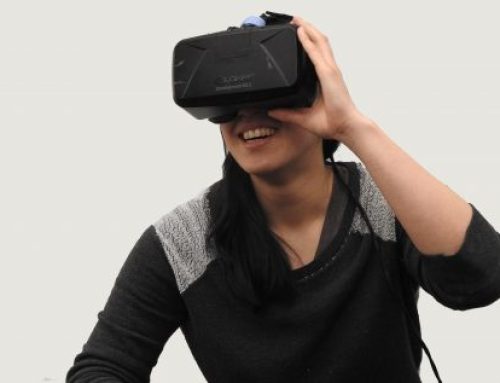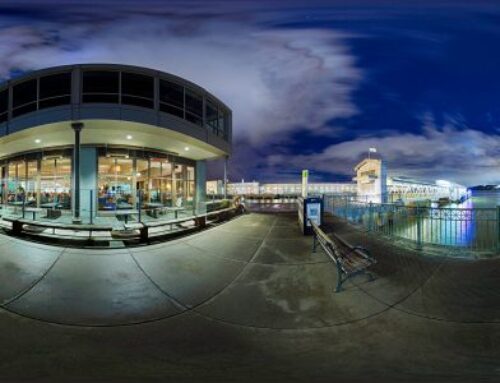Was Sie über Varjos neues VR-2 Headset wissen sollten.
Das heute angekündigte und vorgestellte Varjo VR-2 mit Unternehmensfokus bietet Support für SteamVR-Inhalte und verbessert das bionische Display des Headsets, das die Retina-Auflösung in der Mitte des Sichtfeldes liefert. Eine Variante mit der Bezeichnung VR-2 bietet auch ein integriertes Handtracking über Ultraleap.

Varjo brachte sein erstes Headset, das VR-1, erst im Februar auf den Markt, aber das Unternehmen veröffentlicht bereits die nächste Iteration. Das VR-2 richtet sich an High-End-Enterprise-Kunden und bietet ein verbessertes bionisches Display, von dem das Unternehmen sagt, dass es eine bessere Mischung zwischen dem zentralen Fokus-Display (das eine Retina-Auflösung von 60 PPD bietet) und dem größeren Kontext-Display (das viel niedriger ist, aber das FOV des Headsets auf immersive 87 Grad erweitert) bietet.
Wir waren beeindruckt von Varjos Umsetzung der neuartigen Display-Architektur, die die vorherigen Headsets des Unternehmens als „atemberaubende Vorschau auf die Zukunft der VR“ bezeichnet.
Verbesserungen gegenüber der ersten Version.
Während die Auflösung des VR-2 identisch mit der des VR-1 ist (1.920 x 1.080 Fokusanzeige, 1.440 x 1.600 Kontextanzeige), sagt Varjo, dass die Verbesserungen der visuellen Qualität von einem verbesserten optischen Kombinator, einer verbesserten Kalibrierung zwischen Fokus- und Kontextanzeige und einem Diffusor stammen, der den Effekt der Bildschirmtür auf die Kontextanzeige reduziert. Das Unternehmen sagt, dass das Ergebnis eine weichere Mischung zwischen den beiden verschiedenen Displays ist, was für ein natürlicheres Aussehen und einen etwas größeren Bereich des Retinabereichs der Ansicht sorgt.
VR-2, der über ein integriertes SteamVR-Tracking verfügt, wird nun auch mit Unterstützung für SteamVR-Inhalte ausgeliefert. Dies gilt auch für die originalen Varjo-Headsets.
Varjo stellt klar, dass nur seine native API derzeit die unabhängige Darstellung der Auflösung der Fokusanzeige hoher Dichte und der Kontextanzeige niedrigerer Dichte unterstützt, während SteamVR-Inhalte nur eine einzige Auflösung unterstützen. Um den Grafikprozessor nicht zu sehr zu belasten, wird der SteamVR-Inhalt auf dem Headset um 40 PPD angezeigt, obwohl Benutzer dies optional auf bis zu 60 PPD einstellen können, wenn sie über die GPU-PS verfügen.
Varjo VR-2 Pro mit Hand-Tracking.
Neben dem VR-2 word Varjo auch einen VR-2 Pro anbieten, das zusätzlich ein integriertes Handtracking über Ultraleap (ehemals Leap Motion9) sowie ein abnehmbares Gegengewicht für die Rückseite des Headsets zur besseren Balance beinhaltet. Das Modell VR-2 Pro wird auch mit einem 10 Meter Kabel geliefert, während das Kabel beim VR-2-Modell lediglich auf 5 Meter begrenzt ist.
Alle Varjo-Headsets beinhalten Eye-Tracking und das Unternehmen sagt dazu, dass neue und alte Headsets gleichermaßen von einer schnelleren und genaueren Eye-Tracking-Kalibrierung profitieren werden. Das Unternehmen behauptet, dass das integrierte Eye-Tracking das aktuell Beste in einem VR-Headset ist.
Preise und Erscheinungsdatum.
Das Modell VR-2, welches sich immer noch an High-End-Unternehmenskunden richtet, ist mit 4.000 € ein wenig günstiger als das VR-1 (5.000 €). In der Zwischenzeit wird die VR-2 Pro mit dem gleichen Preis von 5.000 € wie das Original angeboten.
Das ist vor dem Hinzufügen von Basisstationen für Tracking, Controller und die obligatorische Support-Lizenz für 800 €. Beide Headsets sind ab heute erhältlich.
Anfang dieses Jahres begann Varjo, das XR-1 Dev-Kit anzubieten, das eine Variante des VR-1 ist, aber mit hochwertigen Kameras an Bord für Augmented-Reality-Anwendungen. Das Unternehmen hat derzeit noch keine XR-2 angekündigt, aber wir erwarten, dass sie zu gegebener Zeit kommt.
Vielen Dank für Ihren Besuch.


